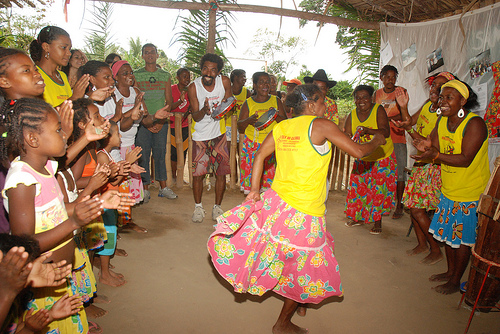Samba de Roda, which involves festive music, dance and singing, was developed in the state of Bahia, in the region of the Recôncavo during the 17th century. It evolved from the dances, rhythms, and cultural traditions from different regions in Africa where enslaved Africans brought to Brazil were from. One of the defining characteristics of the dance is the gathering of participants in a circle (roda) while each one takies turns dancing in the center of the ring while the others clap their hands and sing. At first, a major component of regional popular culture among Afro-Bahians, the Samba de Roda was eventually taken by migrants to Rio de Janeiro, where it influenced the evolution of the urban samba that became a symbol of Brazilian national identity in the 20th century.







Leave a Reply